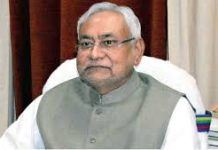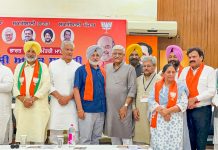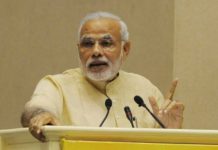
THE SKYLINE was a dark, uncomfortable grey as I stood at the window of my office in Delhi’s Connaught Place area, watching plumes of thick smoke spiralling skywards. Word had spread that Indira Gandhi had been shot dead by her Sikh bodyguards and a motley crowd of angry protestors had started burning taxis. The phones rang incessantly, each call bringing news of an unfolding carnage.
One such call was from my father, an Indian Air Force officer. He had left his office in Lutyen’s Delhi, the political heart of the Capital, at about 7 pm as he did daily, but that day — 31 October, 1984 — the proud uniformed officer cowered in fear. He had tried making his way home on his Vespa scooter but by then, mobs had already started searching for anyone in a turban.
My father had discarded his turban and worn a helmet to reach home, an act that left a deep wound in his psyche. Another relative hid inside a water tank overnight, after being chased by a mob in South Extension, a posh Delhi locality. The tank water that November night was cold, but he trembled in sheer fright as he described how he ran for dear life.
But the next three days were about death. Every morning, I turned the key of a huge padlock — my family secure within the precincts of the house — and went about my job as a young reporter. I have lost count of the number of times my taxi was stopped by blood-lusting lumpens. They were looking for Sikhs everywhere, anywhere. Under the seat, inside the boot. Several times, they ordered the driver to open the petrol tank and thrusting a rubber pipe in, simply sucked petrol out, preparing for the next kill.
The streets of India’s political capital were littered with burning vehicles, burning houses, burning gurdwaras, burning men. Death was in naked display; turbaned Sikhs easy prey. For three days and nights bonfires raged as the mobs freely slaughtered. Helpless women and children sat around burnt corpses and wailed in Mongolpuri, in Palam, in Bhogal. Faceless colonies now etched in aff idavit after meaningless affidavit.
My father had discarded his turban and worn a helmet to reach home, an act that left a deep wound in his psyche
Police vehicles drove past hapless women in Mongol puri. We waved desperately for them to stop. Help us, help us, the women pleaded, looking in turns at us and the passing vehicle. Why were the cops not stopping? The women pointed us to a nallah, a drain running through Mongolpuri and adjacent Sultanpuri where burnt bodies had been dumped. ‘Stop, stop,’ the women and I screamed in unison when another police car drove by. It slowed for a moment as one of its occupants said, “Hamari duty khatam ho chukki hai.”
They were past their duty hour. So what if mobs were still on the rampage. So what if these widows knew the names of their husbands’ killers? So what if a young innocent, barely in her 20s, was holding her dead four-year-old son to her chest?
Everyone in Mongolpuri revealed the truth as they saw it — Sajjan Kumar, the Congress MP, had freely distributed kerosene bottles and hundred rupee notes, Sajjan Kumar’s men moved around with voters lists in their hands, Sajjan Kumar’s men first beat the men with iron rods, then forced them to cut their hair and then burnt them alive.
Revisiting 1984 is a painful memory; the denial of justice a second stab in the hearts of wretched survivors. 1984 is still about the dead and the living.
WRITER’S EMAIL
shammy@tehelka.com












